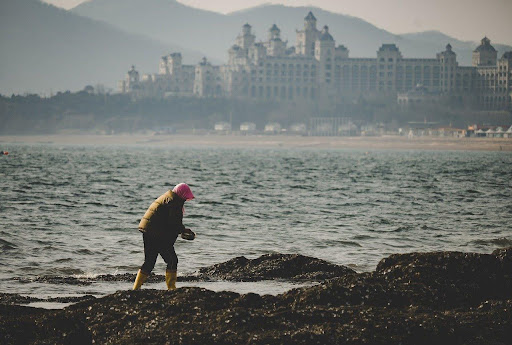
The ocean can be beautiful and terrifying at the same time. In Dunkle’s Bones by Craig Zumwalt, Ned Beehoven, a young crew member on the Sweet Pea, witnesses firsthand the dangers lurking beneath the surface.
What starts as an ordinary fishing expedition becomes a nightmare when an unknown sea creature, armored in bone, changes everything. But beyond the thrill and horror, Ned’s experience highlights an undeniable truth: nature is unpredictable, and when disrupted, it fights back.
What if the greatest threat to our oceans wasn’t something man-made but something lurking beneath the waves? Craig Zumwalt’s Dunkle’s Bones is a chilling reminder of the power, mystery, and fragility of our planet’s ecosystems.
We’re Destroying the Oceans
One of the most striking elements of the novel is the presence of a marine predator—an ancient, terrifying, and highly efficient killer that defies scientific classification. The characters, including marine biologist Alexa Jennings and Coastal Investigations officer Ned Beehoven, are forced to confront the limits of human knowledge.
Scientists estimate that over 80% of the ocean remains unexplored, and new species are discovered regularly. However, despite the warnings, activities such as deep-sea mining, overfishing, and pollution destroy habitats faster than we can study.
What if there are other undiscovered creatures, potential cures for diseases hidden in marine biodiversity, or ecosystems we’ve yet to understand?
Disrupting Ecosystems Has Unpredictable Consequences
In Dunkle’s Bones, the fishermen aboard the Sweet Pea unknowingly haul up a mysterious creature, triggering a horrific chain of events. Their unintended disturbance of the ocean’s balance unleashes something best left undisturbed.
This fictional scenario reflects a real-world problem: human intervention in nature often has unintended and devastating consequences.
When we tamper with nature without understanding the full impact, we risk triggering disasters—whether it’s the loss of biodiversity, the collapse of entire ecosystems, or unpredictable consequences that ripple across the planet.
Climate Change and Rising Ocean Temperatures Could Wake the Unknown
As climate change warms the oceans, we’re seeing unusual and unprecedented changes:
- Ancient viruses and bacteria trapped in ice are being released due to melting glaciers.
- Deep-sea creatures are being forced into new territories as their environments become uninhabitable.
- Sharks and other predators are migrating to areas where they were previously rare, changing entire ecosystems.
Could Dunkle’s Bones be a metaphor for what’s to come? We may not have prehistoric sea monsters hiding in the depths, but the long-term consequences of rising ocean temperatures could be equally terrifying.
Conservation Is a Race Against Time—And We Must Act Now
By the end of Dunkle’s Bones, it’s clear that the ocean is far more powerful and unpredictable than humans had imagined. The survivors are left shaken, questioning what else lies beneath the waves.
This mirrors a growing global concern: we are running out of time to protect our oceans.
- Coral reefs are dying at an alarming rate, with some scientists predicting total collapse by 2050 if climate change continues unchecked.
- Overfishing has driven species like tuna and cod to near extinction.
- Plastic waste in the ocean is expected to outweigh fish by 2050 unless we curb pollution.
We don’t need to fear a fictional sea monster; we need to fear our negligence. Conservation efforts like sustainable fishing, marine protected areas, and reducing plastic waste are more critical than ever.
If we don’t take action to conserve marine life, protect ecosystems, and reduce our environmental footprint, we may soon find ourselves facing consequences far more devastating than fiction.